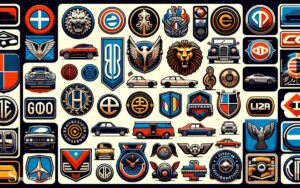American Car Symbols and Names: Explanations!
American car brands are emblematic of the country’s history in automotive innovation. Some of the most recognizable symbols and names include the Chevrolet bowtie, the Ford blue oval, the Cadillac crest, the Dodge ram, the Jeep grille, and the Tesla “T.”
The symbolism in American car logos often reflects the brand’s heritage and values. For example:
These symbols have become synonymous with American culture, each telling its own story of ambition, innovation, and the pursuit of the American dream.
The icons of American automotive brands not only signify their rich heritage but also influence the loyalty and passion of car enthusiasts around the world.
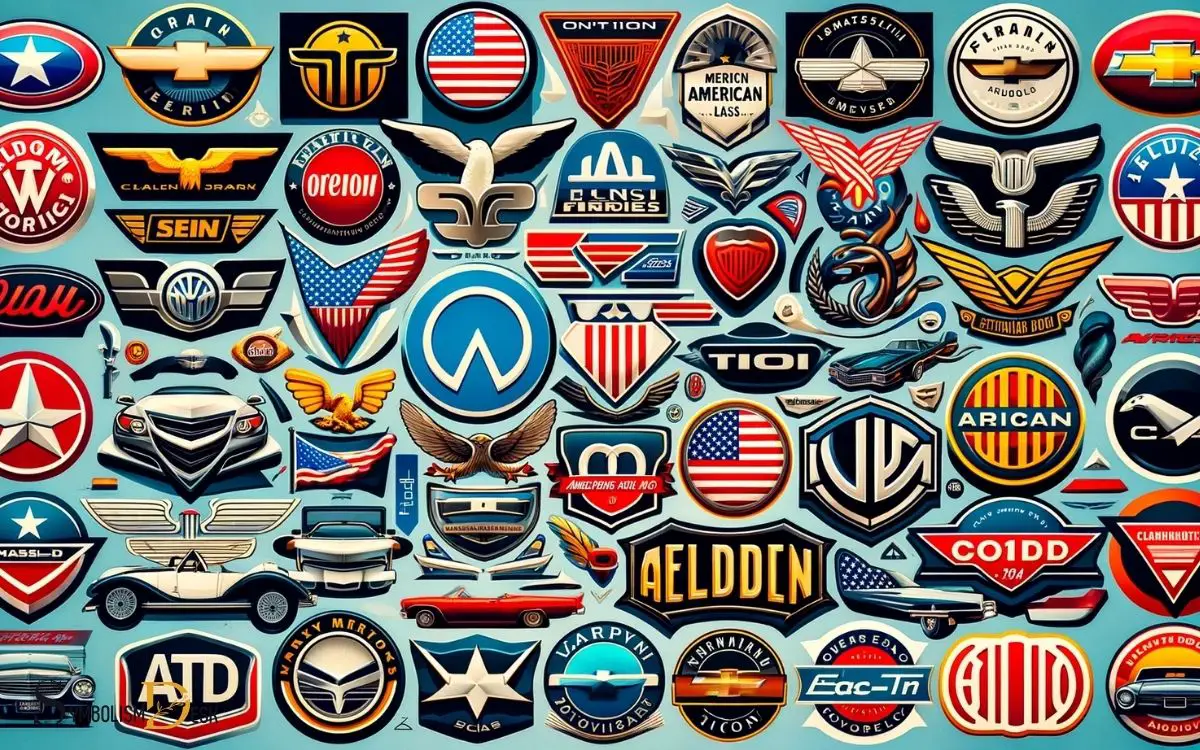
Key Takeaway
The Ford Blue Oval: A Symbol of Legacy
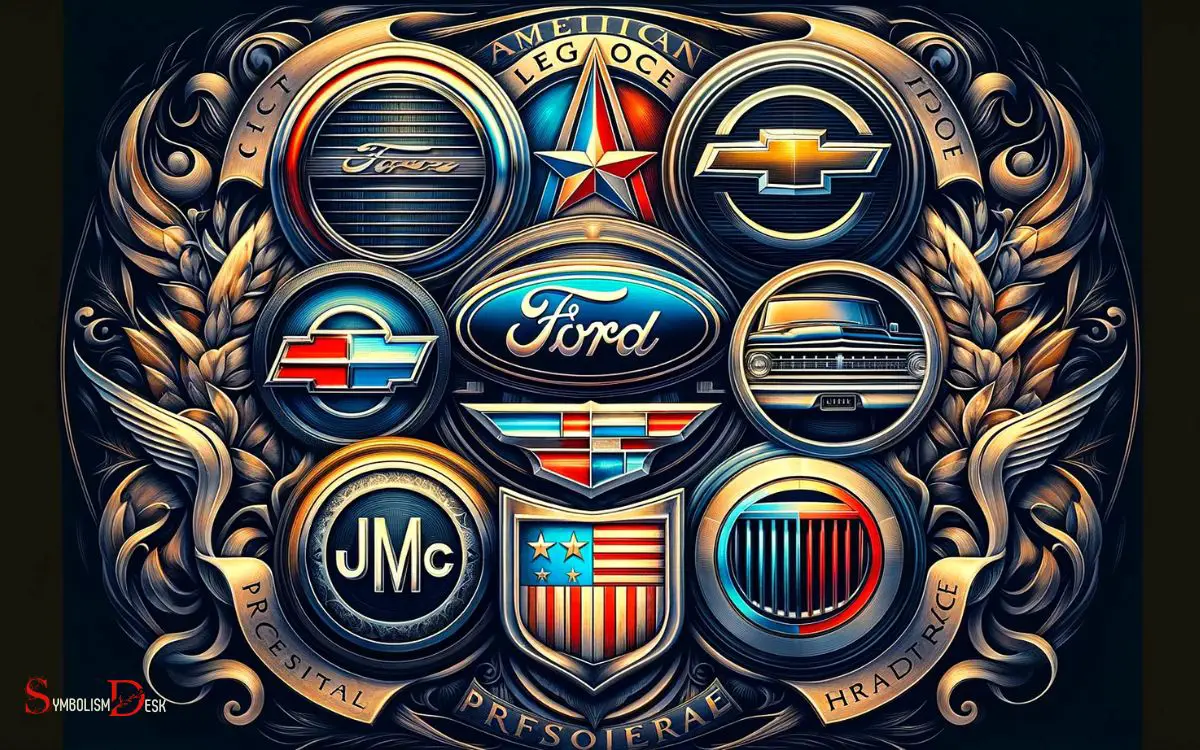
The Ford Blue Oval symbolizes the company’s legacy and heritage in the automotive industry. It has been an iconic emblem for Ford, representing its commitment to quality, innovation, and reliability since its introduction in 1907.
The oval shape signifies the company’s global presence and its aspiration to be a leader in the automotive world.
Over the years, the blue color has become synonymous with trust, strength, and dependability, qualities that Ford aims to instill in its vehicles.
The emblem has evolved to reflect the changing times while retaining its core values. It serves as a reminder of Ford’s rich history and its constant endeavor to adapt to new challenges, making it a timeless symbol of automotive excellence.
Chevrolet Bowtie: Unraveling Its Origins
Unveiling the history of the Chevrolet Bowtie emblem, originating in 1913, it has become an enduring symbol of the brand’s identity and values in the automotive industry.
The iconic Chevrolet Bowtie has a fascinating origin story that reflects the brand’s evolution and enduring legacy.
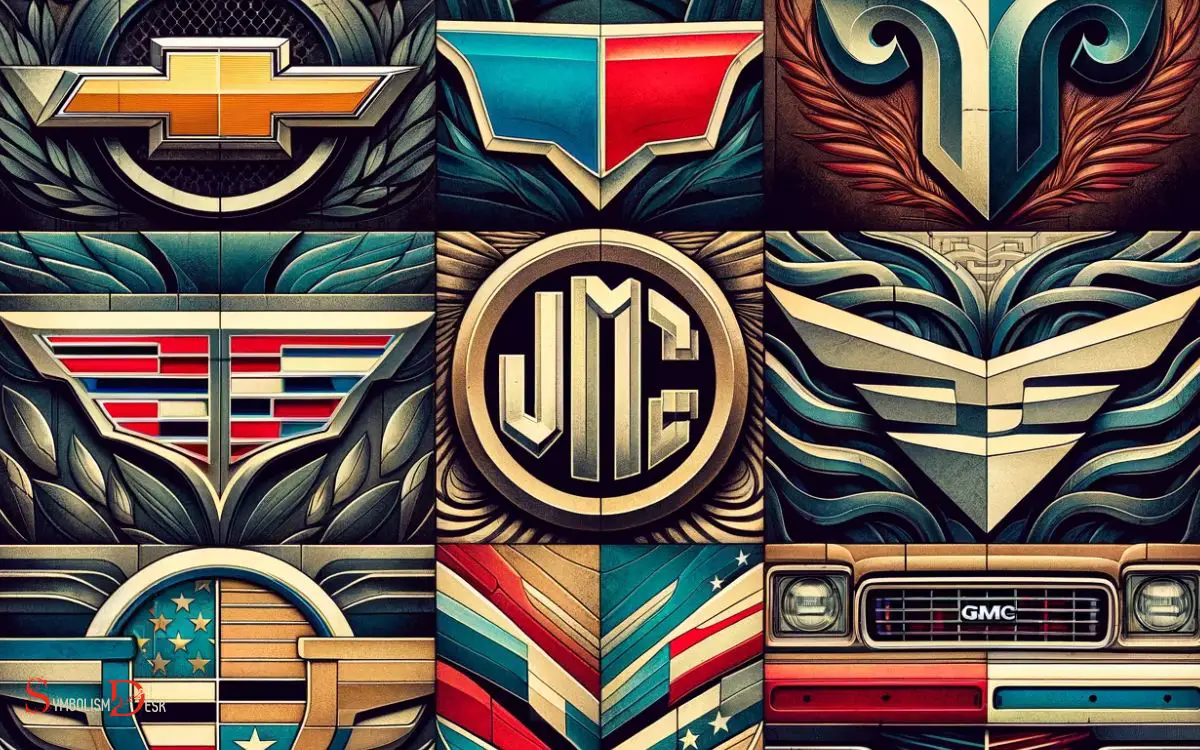
Here are four key points about the origins of the Chevrolet Bowtie emblem:
- William C. Durant, the co-founder of Chevrolet, reportedly saw the design in a Paris hotel room. The shape on the wallpaper fascinated him, leading to the inspiration for the Chevrolet logo.
- The first time the Bowtie emblem appeared on Chevrolet cars was in 1914, and it has undergone several design iterations since then.
- The exact origins of the Bowtie’s design elements remain a subject of debate, adding an air of mystery to the emblem’s history.
- Despite the uncertainties, the Chevrolet Bowtie has cemented its place as one of the most recognizable automotive symbols worldwide.
Dodge Ram’s Powerful Emblem
The Dodge Ram emblem holds historical significance as it represents the brand’s lineage of powerful, durable trucks.
A closer analysis of its design elements and inspiration reveals the emblem’s connection to the rugged and robust characteristics of the Ram trucks.
Furthermore, the emblem’s cultural impact and recognition among automotive enthusiasts and consumers contribute to its enduring presence in the American automotive landscape.
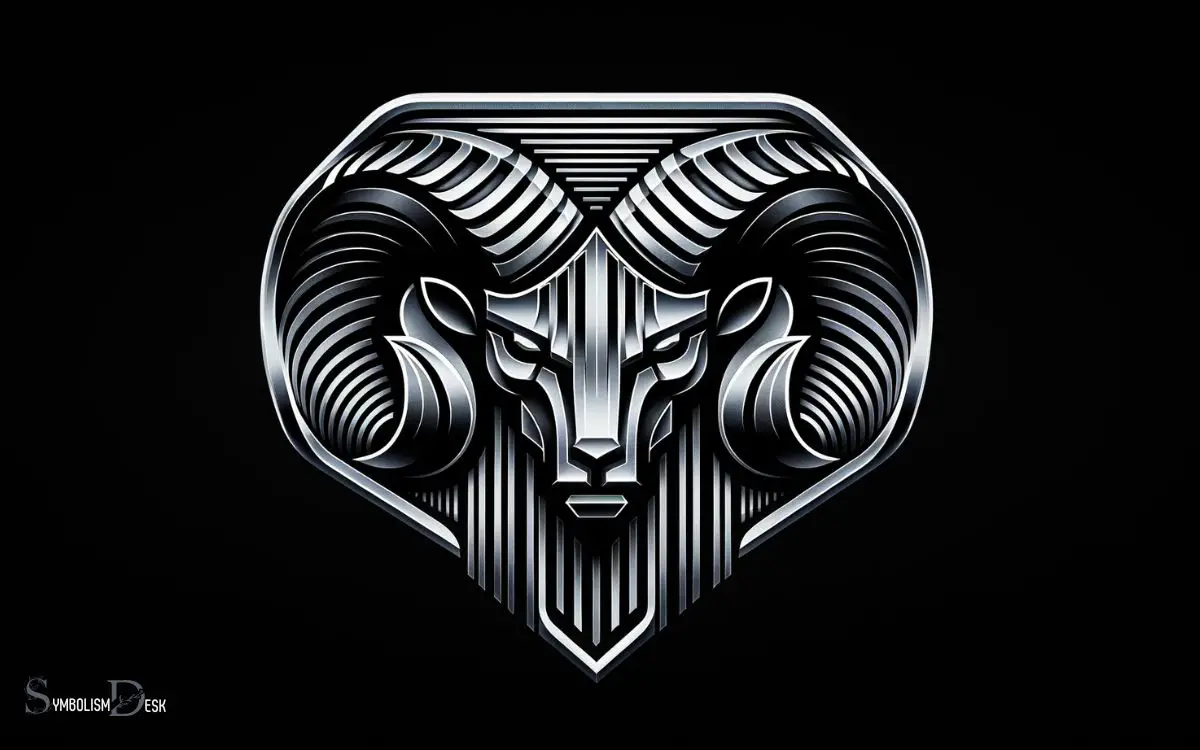
Ram’s Historical Significance
Dodge Ram’s emblem holds a powerful historical significance in American car culture.
The emblem’s historical importance is derived from several key factors:
- Symbol of Strength: The Ram’s head symbolizes power, strength, and determination, reflecting the rugged and robust nature of Dodge trucks.
- Heritage and Tradition: The Ram emblem has been an integral part of Dodge’s identity since the 1930s, symbolizing the brand’s long-standing commitment to producing durable and reliable vehicles.
- Cultural Icon: Over the years, the Ram emblem has become ingrained in American automotive culture, representing a sense of pride and resilience for both drivers and enthusiasts.
- Evolution of Design: The emblem has evolved over time, adapting to modern aesthetics while preserving its historical significance, making it a timeless symbol in the automotive industry.
Design Elements and Inspiration
Continuing from the previous subtopic, the emblem’s design elements and inspiration reflect Dodge Ram’s enduring legacy as a symbol of strength and resilience in American car culture.
The emblem features a bold and powerful ram’s head, symbolizing authority and determination. Its sleek, muscular lines convey a sense of force and capability, mirroring the characteristics of the Dodge Ram trucks.
The emblem’s metallic finish adds a touch of sophistication, while the use of the color black exudes a sense of dominance and authority.
The inspiration for the emblem’s design can be traced back to the ram itself, known for its rugged nature and unwavering strength.
This emblem serves as a visual representation of the Dodge Ram’s robust and unyielding identity.
| Design Element | Description | Inspiration |
|---|---|---|
| Ram’s Head | Bold and powerful | Authority and determination |
| Muscular Lines | Sleek and forceful | Characteristics of Dodge Ram trucks |
| Metallic Finish | Sophistication | – |
| Color Black | Dominance and authority | The rugged nature and strength of a ram |
Cultural Impact and Recognition
Named for its enduring legacy and symbolizing strength and resilience in American car culture, the emblem of Dodge Ram holds significant cultural impact and recognition.
The emblem’s cultural impact is evident in various aspects:
- Historical Roots: The emblem draws from the imagery of the mighty ram, reflecting the pioneering spirit and ruggedness of American heritage.
- Brand Identity: It has become a symbol of Dodge’s commitment to producing powerful, durable vehicles, resonating with consumers seeking reliability and toughness.
- Pop Culture References: The emblem has been featured in movies, music, and other forms of popular media, further embedding it in American cultural consciousness.
- Community and Pride: Owners often identify strongly with the emblem, creating a sense of belonging and pride within the Dodge Ram community.
Cadillac’s Crest: A Mark of Luxury
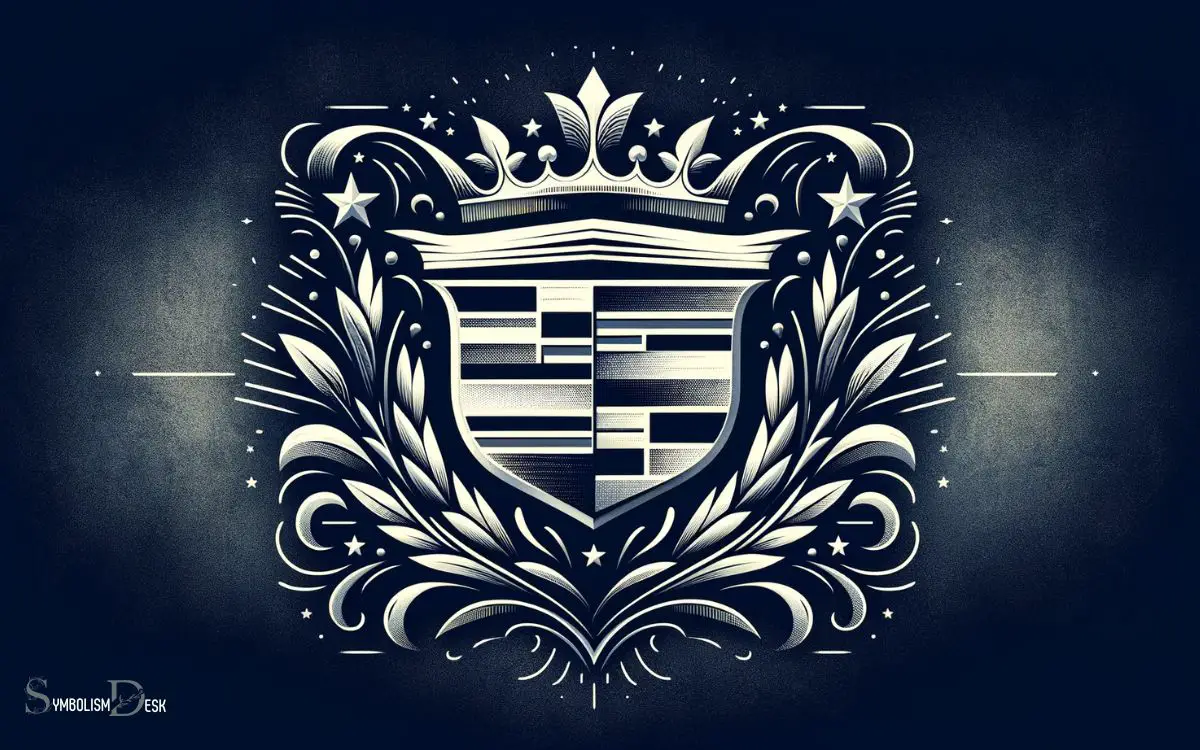
With its distinctive crest, Cadillac has long been recognized as a symbol of luxury in the American car industry.
The emblem, derived from the family crest of Antoine de la Mothe Cadillac, the founder of Detroit, features a crown and a wreath, symbolizing the brand’s commitment to excellence and victory.
The crest has undergone several modifications over the years, evolving to reflect the brand’s values and heritage. It serves as a visual representation of Cadillac’s prestigious history and its position as a leader in the luxury automotive market.
The crest has become synonymous with sophistication, elegance, and superior quality, making it an iconic symbol that resonates with luxury car enthusiasts.
Its enduring presence on Cadillac vehicles reinforces the brand’s dedication to luxury and continues to captivate the attention of discerning consumers.
Jeep’s Iconic Seven-Slot Grille
The iconic seven-slot grille of Jeep has become a distinguishing feature, embodying the brand’s rugged and adventurous spirit.
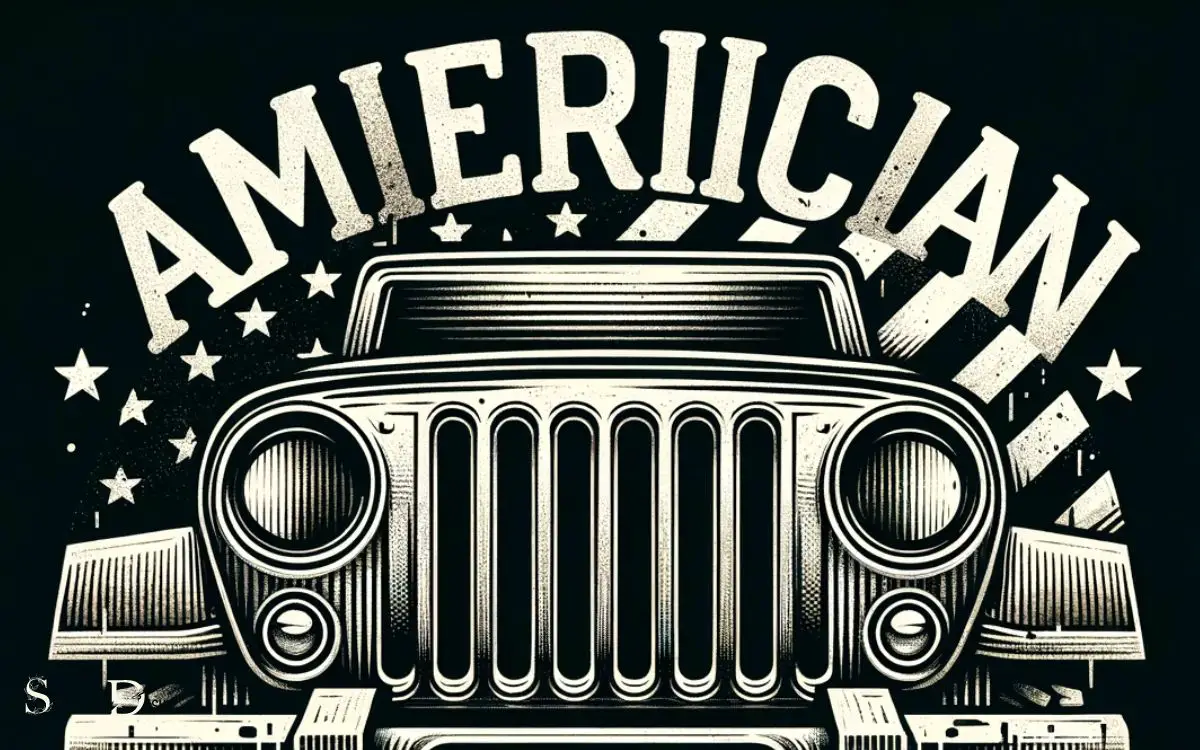
Here are four key aspects that make Jeep’s seven-slot grille iconic:
- Military Origins: The seven-slot grille traces its origins to the Willys MB, a vehicle used by the US military during World War II. The distinctive grille design has been a constant feature in Jeep’s vehicles since then.
- Brand Identity: The seven-slot grille has become synonymous with Jeep, representing its rich heritage and off-road capabilities. It serves as a visual cue for the brand’s authenticity and toughness.
- Evolution and Recognition: Over the years, the grille has evolved in design and materials but has retained its signature seven-slot layout, making it instantly recognizable worldwide.
- Cultural Impact: The grille has transcended its functional purpose to become an emblem of adventure and exploration, cementing its place as an automotive icon.
The seven-slot grille is a crucial element in defining Jeep’s brand identity and heritage, representing its enduring commitment to ruggedness and adventure.
Buick’s Tri-Shield Emblem: A Rich Heritage
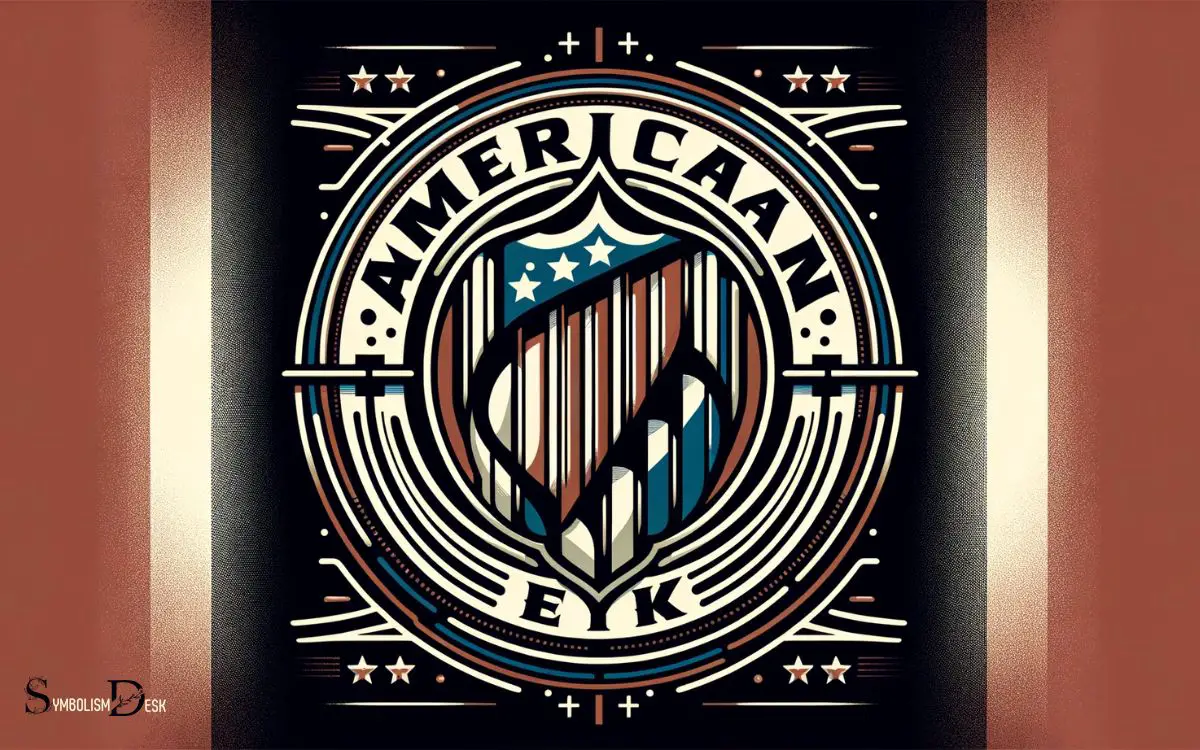
Buick’s tri-shield emblem symbolizes a rich heritage in American automotive history. Established in 1903, Buick has a legacy of crafting luxurious and innovative vehicles.
The tri-shield emblem embodies this legacy, with each shield representing the automaker’s core values of quality, luxury, and performance.
| Shield | Represents |
|---|---|
| First | Buick’s reputation for |
| quality | |
| Second | Buick’s commitment to |
| luxury | |
| Third | Buick’s focus on |
| performance |
The tri-shield emblem has evolved over the years, but it has remained a constant symbol of Buick’s dedication to excellence.
As Buick continues to innovate and adapt to the modern automotive landscape, the tri-shield emblem serves as a reminder of the brand’s enduring heritage and commitment to crafting exceptional vehicles.
GMC’s Professional Grade Emblem
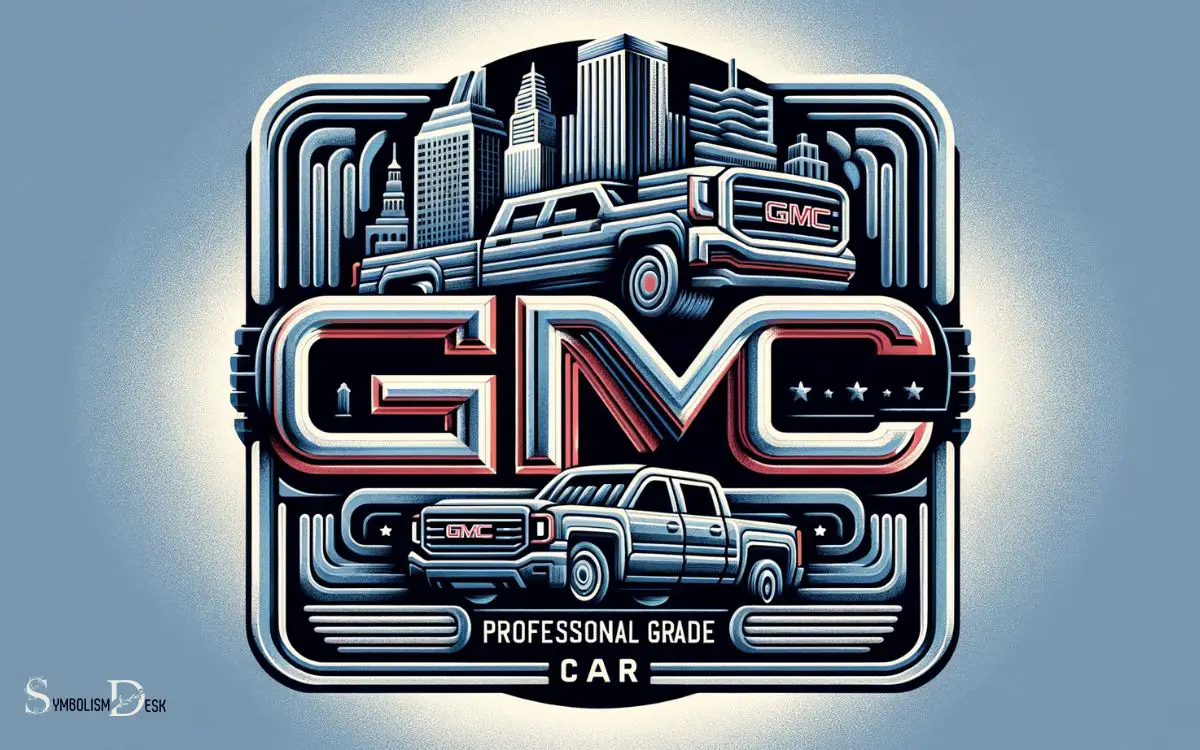
GMC’s Professional Grade emblem is prominently featured on its vehicles, often signifying a dedication to precision and reliability.
This emblem represents the brand’s commitment to producing high-quality, professional-grade vehicles that are designed to meet the needs of professionals and individuals alike.
The emblem’s sleek and modern design reflects GMC’s focus on innovation and advanced engineering. It serves as a symbol of the brand’s heritage and its reputation for producing durable and dependable vehicles.
The Professional Grade emblem is a point of pride for GMC and is a recognizable symbol of excellence in the automotive industry.
- The emblem reflects GMC’s commitment to precision and reliability.
- It symbolizes the brand’s dedication to producing high-quality, professional-grade vehicles.
- The design of the emblem conveys GMC’s focus on innovation and advanced engineering.
- It represents the brand’s heritage and reputation for durability and dependability.
Conclusion
American car symbols and names hold a deep significance, representing the rich legacy, power, luxury, and heritage of each brand. These symbols often transcend their practical purpose, becoming icons of culture and innovation that evoke strong emotional connections. Car brand names and logos are carefully designed to reflect the personality, values, and aspirations of the companies they represent, making them instantly recognizable across the globe. From the sleek luxury of Cadillac to the rugged resilience of Jeep, these elements tell a story that resonates with generations of enthusiasts.
These emblems serve as more than just decorative ornaments on vehicles; they are powerful symbols that convey the values and identity of the car manufacturers.
They hold a special place in American automotive history and continue to evoke a sense of pride and distinction in the hearts of car enthusiasts.



